You don’t need extensive climbing experience to tackle these peaks. Good health, fitness and the right background knowledge will take you all the way to the top.
Why do people climb mountains? Does it represent humanity’s spiritual quest to reconnect with nature, to brush against our limits by trying to touch the sky? Or has Climb Every Mountain from The Sound of Music influenced us more than we’d care to admit?
Some peaks need nerves of steel: technique, training and a familiarity with crampons. Others, as I have discovered, need only basic fitness and a dose of common sense. So, lace up, grab a water bottle and get ready. It only takes three hours to reach some of the world’s most famous peaks. Let’s start easy and work our way up.
[social]
Table Mountain, South Africa
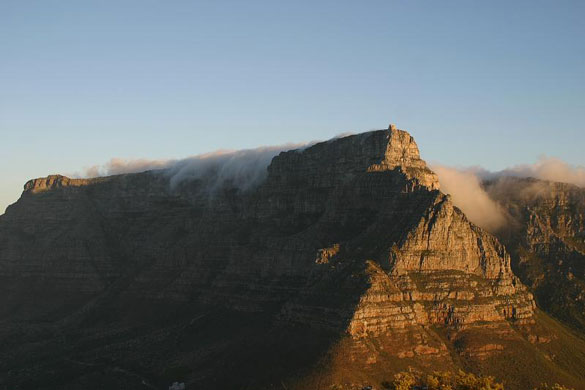
Table Mountain forms a silhouette that symbolizes Cape Town. Its three-kilometer plateau stands guard over the harbour, the prison that housed Nelson Mandela and the ragged townships that represent the worst of the apartheid years. Yet the three-hour climb allows you to leave the city behind.
Platteklip Gorge, which translates encouragingly to ‘flat stone gorge,’ offers the most straightforward route. Wrap up warm, check your mobile phone and take plenty of water. While there is a café at the top, the route itself is isolated, leaving you alone with the 2200 protected plant species that make the park a World Heritage Site. The neighbouring mountain may be called the Lion’s Head, but you’re more likely to see the dassie or rock hyrax en route. This furry cross between a rabbit and a guinea pig significantly outnumbers the porcupines, snakes and tortoises you may otherwise stumble over.
When you reach the peak at 1,086 meters, take comfort in the knowledge that you can always take the cable car back down.
>> Book flights to South Africa or look for hostels in Cape Town
Mount Snowdon, Wales

Another peak with transport and dining facilities is Mount Snowdon, once uncharitably described by Prince Charles as “the highest slum in Wales.” While the facilities are now undergoing renovation, the natural beauty of the highest mountain in England and Wales still eclipses the squabbles at the top.
On a clear day, you can see the territories of England, Ireland, Scotland, and of course, Wales. Clear days are, unfortunately, rare on Yr Wyddfa – which means burial place in Welsh – and it’s important to take weather warnings seriously. 1,085 meters may not sound like much, but Sir Edmund Hillary trained for Everest here and the mountain still claims around a dozen lives each year.
You can access the starfish-shaped Snowdon by several separate routes, with most newcomers choosing the Llanberis path. Plan on around four hours up and three to get back down. Amidst the fog and cloaks of cloud swirl legends of King Arthur, scarlet dragons and the secret underground tunnels linking the abandoned mines and quarries.
>> Find flights to Wales
Mount Sinai, Egypt
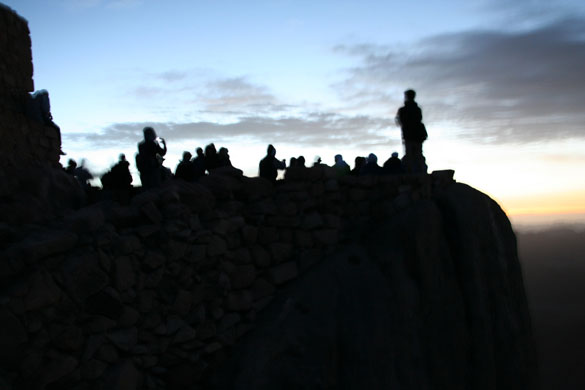
Predictably, historians and archaeologists remain as divided as the Red Sea on the question of whether Mount Sinai really was the one, but the locals seem pretty clear. “You want to climb the Moses Mountain? See 10 commandments?”
To avoid the crushing heat of the Egyptian desert, climb at night so that you arrive at the 2,285-meter peak ready to enjoy the smoky-orange sunrise. You don’t need a guide, but you will need a torch, layers of warm clothes and, as usual, sturdy walking boots with proper ankle support.
Modernization has morphed the former Israelites’ camping ground into a car park, but the climbing routes, although busy, are unspoiled. Choose between two aptly named paths: the grueling Steps of Repentance that head straight up or the easier Camel Path, where Bedouins tout camel rides for weary travelers.
>> Book flights to Egypt and read our Egypt travel guide
Mt Fuji, Japan
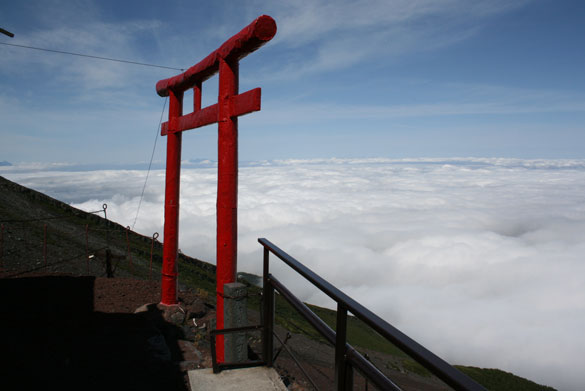
Dreamy Mount Fuji rising through the clouds and framed with cherry blossom – it’s an image that smiles from every postcard rack and guidebook in Japan. With luck, you can see this volcano through the Tokyo city smog and for two months every summer you can access its cratered summit.
The magic wilts a little with reality – the blossom is out of season and concrete bunkers line the strict zigzag paths – but the journey has its rewards. Shinto pilgrims form a nocturnal torch-lit procession, the elderly shuffling alongside children, as they file through the crimson gates to reach the Konohana Sakuya Hime shrine.
Most begin their journey at the 5th station, reached by bus from Kawaguchiko. From here it’s around an eight-hour climb through damp forests and onto blackened rock. You don’t need a guide but you still need all the usual precautions – plus a master plan for what you will do after the three-hour descent. Buses finish early here and taxis can be hard to find.
>> Find airfare to Japan
Everest Base Camp, Nepal
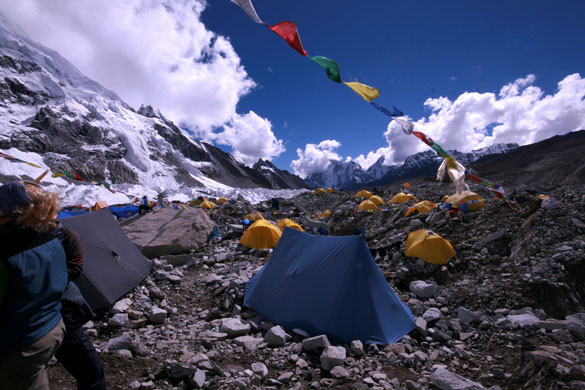
If size really doesn’t matter, then explain Everest’s notoriety. High in the Himalayas, surveying the world beneath its 8,848 meters, climbing Everest has filled many a mountaineer’s dreams. And unless you are a committed, professional climber, that’s probably where it should stay. While commercial trips to the summit do take place, they cost around US$65,000, require flawless climbing skills, 2-3 months of your time and, er, if you get injured you will be left on the ice to die.
Everest Base Camp, on the other hand, is accessible to the enthusiastic novice, with triangles of rainbow-coloured prayer flags fluttering along the path. Several bases sit snug beneath the mountain the Sherpas call Sagarmatha, meaning goddess of the sky. The most popular one lies to the south in Nepal, facing the notorious Khumbu glacier.
If walking to the beginning section of someone else’s climb sounds feeble, consider that it still takes at least two weeks to trek from the Lukla airstrip to the camp at 5,360 meters. Given the risk of altitude sickness, most guides recommend spreading the journey over three weeks. Slow and steady wins the race here, giving your body time to adapt to the thin air.
From the base you can climb Kala Pattar (5,545m) to witness the only thing missing from climbing Everest – a view of the mountain itself.
>> Book flights to Nepal or find a Nepal adventure tour
Mt Kilimanjaro, Tanzania
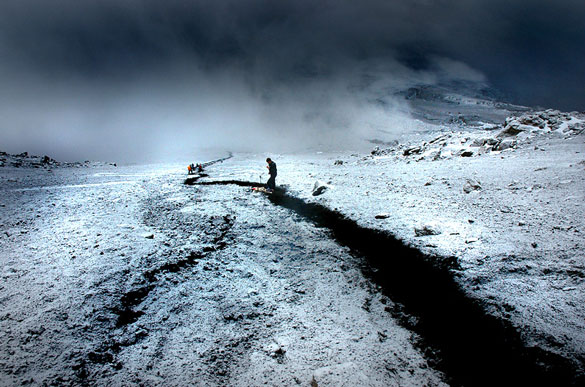
Africa’s highest mountain rises out of the humid banana plantations with a triumphant majesty. Evocative name? Check. Literary references from a Nobel prize winner? Check. Higher than Everest base camp? Oh yeah, baby.
While the Marangu route avoids the need for ice axes or even basic scrambling skills, don’t mistake the Kili ascent for a walk in the park. With all the help in the world you still need to breathe by yourself at 5,892 meters and altitude sickness still kills.
“Pole, Pole,” caution the obligatory guides in Swahili. Slowly. Once again, it pays to take your time. The longer, more challenging Machame route adds on an extra day to help acclimatise. It also allows you to sleep in your own tents, a more fragrant experience than the crowded Marangu huts.
After five or more days plodding towards the sky, there’s something disheartening about realizing that it only takes one day to get back down. For all the exhilaration and exhaustion, there’s a kind of hollow madness to mountain climbing.
A journalist once asked George Mallory, who later disappeared on Everest, why he wanted to climb the mountain so much. Mallory’s famous reply: because it’s there.
>> Book flights to Tanzania or learn more about climbing Kilimanjaro
Read more about trekking and mountain climbing around the world:
- 10 Awesome Treks that Almost Anyone Can Do
- 11 Famous Volcanoes That You Can Climb
- 10 Best Hiking Trails in the World
Read about author Abigail King and check out her other BootsnAll articles.
Additional photo credits:
Table Mountain by darkroomillusions on Flickr, Snowdon by jimmedia on Flickr, Sinai by MichaelTyler on Flickr, Everett Base by emifaulk on Flickr, Kilimanjaro by eir@si on Flickr